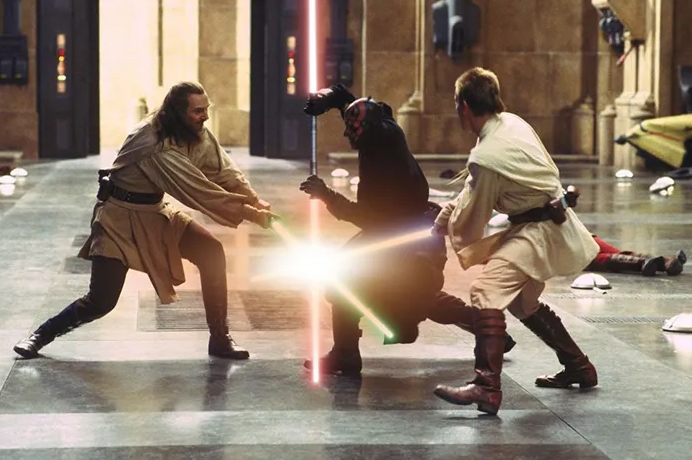1. Droids
-
Thin film use: Neural networks in droids like C-3PO or BB-8 would require ultra-dense integrated circuits, likely built using atomic-layer deposition (ALD) or molecular beam epitaxy (MBE) to achieve the compactness and precision needed for artificial intelligence and sensory processing.
-
Application: Thin films of superconducting materials, memristive oxides, or quantum dot arrays could power learning and decision-making modules—akin to synthetic synapses.

2. Lightsabers
-
Thin film use: Lightsabers would need miniaturized energy cells and plasma containment fields, both of which could be built from multilayer thin films of dielectric and magnetic materials.
-
Application: The focusing crystal chamber might employ nanocoatings to align kyber crystal output, while optical thin films would fine-tune the energy dispersion into a blade shape.

3. Blasters (Particle Weapons)
-
Thin film use: Blaster barrels and focusing arrays could be coated with wear-resistant, high-temperature conductive films, crucial for managing extreme energy discharges.
-
Application: Transparent conductive oxides or layered metamaterials could be used for directing particle beams and maintaining barrel integrity under rapid fire.

4. Bacta Tanks
-
Thin film use: The sensor arrays that monitor and regulate healing in a bacta tank would likely include biocompatible thin films for real-time biofeedback and optical coatings to manage transparency and UV sterilization.
-
Application: Nanostructured TFD biosensors could track metabolic signals and drug diffusion through the healing gel.

5. Body Armour
-
Thin film use: Armour like stormtrooper or Mandalorian suits could be layered with multi-material thin films for bullet resistance, thermal regulation, and radar/energy absorption.
-
Application: Thin ceramic layers atop flexible substrates could create ultralight, high-impact protection, while carbon nanotube coatings could provide energy dispersal.


